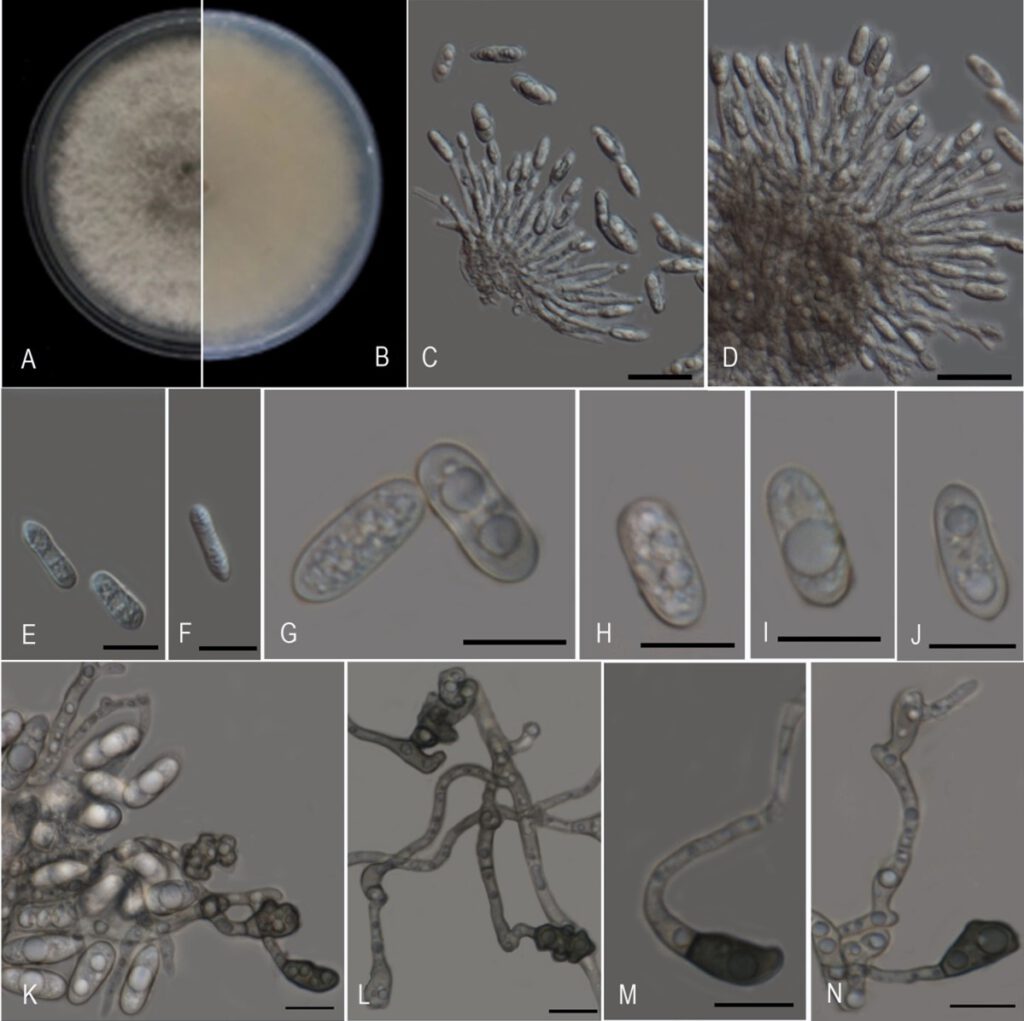Colletotrichum tomentosae J.W. Liu, Manawas., M. Luo & K.D. Hyde, sp. nov.
MycoBank number: MB 559482; Index Furgorum number: IF 559482; Facesoffungi number: FoF 10692.;
Etymology–Name refers to the cultivar of the host plant C. grandis cv ‘Tomentosa’.
Holotyle–ZHKUCC 21-0103.
Endophytic on C. grandis cv ‘Tomentosa’ leaf. Sexual morph: not observed. Asexual morph on PDA. Conidiophres 20–40 × 3–5 μm (x̄= 30 × 4 μm, n= 30), hyaline, cylindrical, 1-3 cells, unbranched or branched at the base. Conidia 10–20 × 3–6 um (x̄= 13 × 4 μm, n= 50), single cell, straight, hyaline, concave central, blunt round, convex at both ends and some with two guttules. Appressoria 5–15 × 5–10 μm (x̄= 10 × 7 μm, n= 50) solitary or in loose groups, light brown to brown, oval to irregular, smooth-wall and jagged edges.
Cultural characteristics. Colonies on PDA plat reaching 70 mm diam. in seven days at 28℃, growth rate 10–11 mm/day (x̄= 10 mm, n=6) Colonies circular, margin undulate, flat, covered by lavender grey blankets appearance and colony from above: grey; reverse buff.
Material examined. China, Guangdong province, Huazhou, isolated from a healthy leaf of C. grandis cv ‘Tomentosa’, May 2019, YX Shu, (dried cultures ZHKU 21-0088 holotype, 21-0106); living cultures ZHKUCC 21-0103 ex-type, ZHKUCC 21-0104 ex-paratype).
Habit and host. On healthy leaf of C. grandis cv ‘Tomentosa’.
Known distribution. China (Huazhou, Guangdong provinces).

Morphological characteristics of Colletotrichum tomentosae (ZHKUCC 21-0103; Holotype). A, B. Upper and reverse views of cultures on PDA 7days after inoculation. C, D. Conidiophores with developing conidia. E–J. Conidia on PDA. K–N. Appressoria Scale bars: 10 μm (E–N); 20 μm (C, D).
